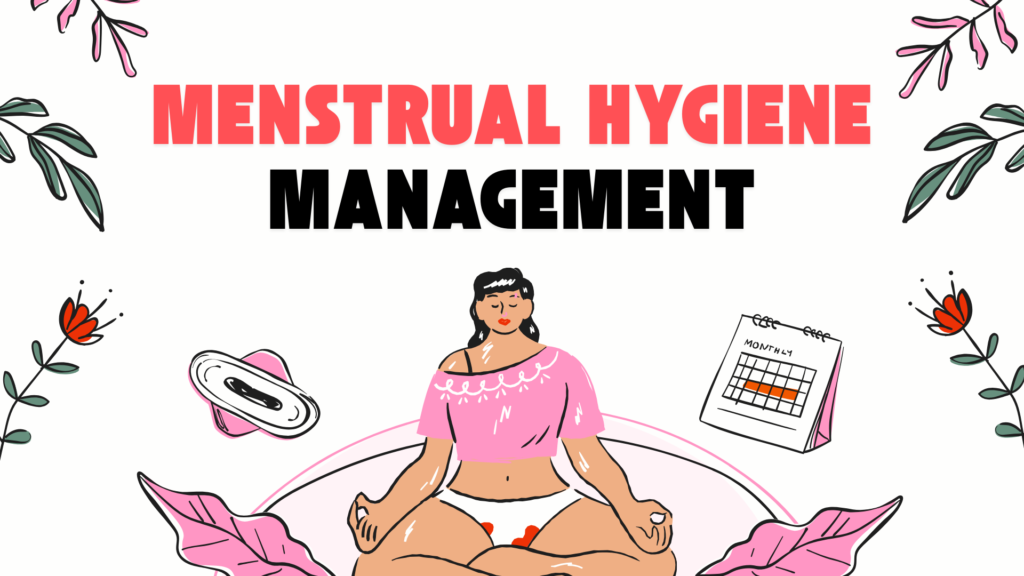
Maintaining good menstrual hygiene isn’t just about using the right products; it involves education, sustainable practices, and overall well-being. While products like pads, tampons, and menstrual cups are essential, true menstrual hygiene management (MHM) extends to lifestyle choices, personal care routines, and awareness about bodily changes.
Understanding Menstrual Hygiene Management
Menstrual Hygiene Management (MHM) refers to practices that ensure women and girls can manage their periods safely, hygienically, and with dignity. This includes access to clean and safe menstrual products, proper sanitation, and the right information to maintain health during menstruation.
Choosing the Right Menstrual Products
There is no one-size-fits-all approach to menstrual hygiene management. Each person has different needs, preferences, and sensitivities. Here are some common menstrual products:
- Sanitary Pads: Widely used and convenient, but disposable pads generate waste.
- Tampons: A discreet option but must be changed frequently to avoid infections.
- Menstrual Cups: A sustainable and reusable choice, though it requires proper cleaning.
- Period Underwear: Comfortable and eco-friendly, these absorb menstrual flow without extra products.
- Reusable Cloth Pads: An alternative to disposable pads, requiring proper washing and drying.
Essential Menstrual Hygiene Tips for a Healthy Period
Maintaining hygiene during your period is crucial to preventing infections and discomfort. Here are some menstrual hygiene tips to keep in mind:
- Change menstrual products regularly: Avoid wearing a pad or tampon for more than 4-6 hours.
- Wash hands before and after handling products: This prevents bacterial infections.
- Use the right feminine hygiene wash: Choose mild, pH-balanced products to clean the external genital area.
- Avoid scented products: Fragrances in tampons or pads can cause irritation.
- Dispose of products correctly: Wrap used pads or tampons before discarding them in a bin.
- Stay hydrated and eat healthily: Proper nutrition can help manage period symptoms and support hygiene.
Feminine Hygiene Wash: What You Need to Know
Caring for intimate areas properly is an essential part of menstrual hygiene management. Many women use a feminine hygiene wash to keep the vaginal area clean, but it’s important to choose the right product.
- pH-balanced washes: The vagina has a natural pH of around 3.8–4.5. Using a wash with this pH helps maintain balance.
- Fragrance-free options: Scented products may disrupt the vaginal flora, leading to infections.
- Mild, soap-free formulas: Harsh soaps can strip natural moisture and cause irritation.
While a feminine hygiene wash can be helpful, remember that the vagina is self-cleaning. Washing with plain water and mild, unscented soap is usually sufficient.
Sustainable and Eco-Friendly Menstrual Hygiene Management
With growing environmental concerns, adopting sustainable menstrual hygiene practices is essential. Consider these eco-friendly alternatives:
- Menstrual cups: Made from medical-grade silicone, these can last up to 10 years.
- Reusable cloth pads and period underwear: These reduce landfill waste compared to disposable products.
- Biodegradable sanitary pads: Some brands now offer eco-friendly disposable options.
By switching to sustainable menstrual products, you contribute to environmental conservation while taking care of your personal hygiene.
Breaking the Stigma Around Menstrual Hygiene Management
Despite menstruation being a natural biological process, stigma and myths still surround it. Open conversations about periods help:
- Normalize discussions on menstrual health.
- Encourage proper hygiene practices.
- Improve access to menstrual products for all.
Governments, schools, and communities should work towards menstrual education and ensuring that all menstruators have access to safe and hygienic products.
Final Thoughts
Menstrual hygiene management goes beyond just picking the right product. It includes proper hygiene, using safe feminine hygiene wash, adopting sustainable practices, and breaking societal taboos. By prioritizing overall menstrual health, we can create a world where periods are managed with dignity, care, and awareness.
Frequently Asked Questions About Menstrual Hygiene Management
How often should I change my menstrual product?
It depends on the type of product you’re using. Sanitary pads should be changed every 4-6 hours, tampons every 4-8 hours, and menstrual cups can be worn for up to 12 hours, depending on flow.
Is it safe to use a feminine hygiene wash during my period?
Yes, but it’s essential to choose a pH-balanced, fragrance-free feminine hygiene wash. However, washing with lukewarm water is usually sufficient, as the vagina is self-cleaning.
Can poor menstrual hygiene cause infections?
Yes. Not changing menstrual products regularly, using scented products, or not washing hands before handling products can lead to bacterial or yeast infections.
Are menstrual cups safe to use?
Yes, menstrual cups are safe if used correctly. They must be cleaned and sterilized properly to prevent infections. Many users find them comfortable and eco-friendly.
What are the best sustainable alternatives for menstrual hygiene management?
Menstrual cups, reusable cloth pads, and period underwear are excellent sustainable alternatives to disposable products, helping to reduce environmental waste.
Why is it important to talk about menstrual hygiene?
Talking about menstrual hygiene helps break stigma, encourages better hygiene practices, and ensures everyone has access to proper education and products for safe period management.

